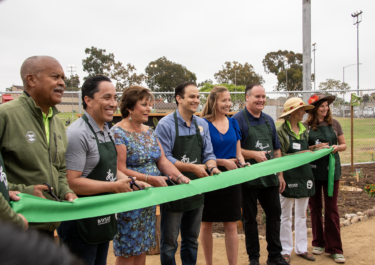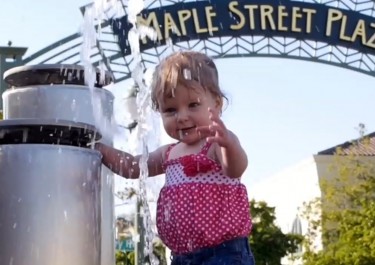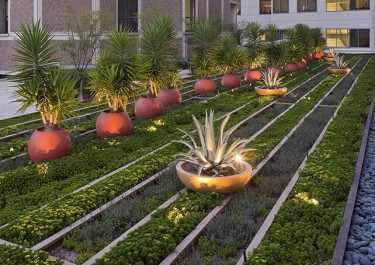May 31, 2019
The “VR” Experience
If you are anything like me, you have spent most of your life surrounded by images of the “high-tech” future: societies where the digital and the physical merged and the only difference between what could be imagined and what could be experienced was a couple lines of code. Films like Total Recall, The Matrix, and Ready Player One, have made virtual reality into the pinnacle of what is modern, forward-thinking, and accessible. Advances in technology over the last decade or so have made this distant future into a piece of everyday life. Still, I have always been fascinated with “VR” technology. So, when I learned this experience was something we offered right here at the office, I knew I had to try it out.
 At the encouragement of Glen Schmidt and the other principals, I had one of our project managers set up the system. I was equipped with the awkward (though surprisingly comfortable) goggles and two hand-held controls which we used to draw a virtual perimeter, to keep me from running into any walls, desks, or chairs and talked through the control operations. Everything about it was surprisingly simple: point and click.
At the encouragement of Glen Schmidt and the other principals, I had one of our project managers set up the system. I was equipped with the awkward (though surprisingly comfortable) goggles and two hand-held controls which we used to draw a virtual perimeter, to keep me from running into any walls, desks, or chairs and talked through the control operations. Everything about it was surprisingly simple: point and click.
Once everything was up and running, it was time to head in.
Inside, the “VR” system loads what looks like a big dark block, with only the outlines of the virtual perimeter visible. Then, like blinking, the virtual world comes into view.
It is a disorienting feeling, at first, to be suddenly transported. Looking around, I found myself just outside a sliding glass door, with a hot tub behind me and clean, white roofs above. Of course, I knew I was still in the office, surrounded by coworkers clicking away at their designs, near the desks and the walls, but that was no longer the world I experienced. Looking down, there were two virtual controls where my hands ought to be, another estranging piece of this virtual world. Holding down a button on one control caused a series of blue dots to extend toward a point somewhere in the middle distance of the simulation. By releasing this button, I could appear at, or “blink” to, that spot. Utilizing this blinking method of moving limited the amount of actual movement I needed to exert, in order to experience the setting, allowing me to reach heights (balconies and rooftops!) I would not have experienced from a site walk alone.

Let us take a step back, for a moment.
Before leaping into the virtual version of the design, I had our Project Manager, Aric, walk me through the model version. I wanted to see if there was any real difference, not only in the experience, but in what I could learn about the site. The most notable disparity between looking at a 3-D model of a design, and walking through the “VR” version of the same site is the understanding of scale. Looking at the digital model, I never once thought to consider what the design might look like from the balcony, from inside the Jacuzzi, from the central walkway, looking up at the second story, or from the rooftops. Inside the “VR” system, these were not only considerations- they were actionable parts of my experience. I could see exactly what I might be able to expect, from any point in space. Up high, looking out over the rooftops toward the horizon, or down below, fully immersed in the experience of the design itself. It’s not hard to think how this might be helpful in considering a design meant for the built world. After all, what better way to know if something works, functionally and aesthetically, than to walk around inside of it?
 There is a less technical benefit to virtual reality, as well: it is fun. There is a certain sense of wonder involved in walking or “blinking” around the virtual space, taking in the design from every direction. Jumping to rooftops or across a field, or tossing a ball to test the space (or just to toss a virtual ball) is a genuinely unique and engaging experience. My test run quickly caught the eye of the office, and a few more of us simply had to give it a whirl. We ended up having great time, showing each other around the virtual space and laughing at the momentary vertigo.
There is a less technical benefit to virtual reality, as well: it is fun. There is a certain sense of wonder involved in walking or “blinking” around the virtual space, taking in the design from every direction. Jumping to rooftops or across a field, or tossing a ball to test the space (or just to toss a virtual ball) is a genuinely unique and engaging experience. My test run quickly caught the eye of the office, and a few more of us simply had to give it a whirl. We ended up having great time, showing each other around the virtual space and laughing at the momentary vertigo.
Virtual reality removes some of the ambiguity from the review of a design. One does not have to wonder if a walkway might feel closed in or overexposed, well-lit or claustrophobic. These concerns can be experienced in the virtual space, thereby becoming easily managed and resolved. Moreover, it provides a broader perspective in regards to a project overall. The “VR” experience is a great way to instill faith, to break tension, and to provide a touchstone for “non-designers” that feels realistic. It is one thing to imagine the self in relation to a place. It is another to go there, to look up at the arching trees, the stout or tall buildings, the landscape stretching out toward the skyline, and understand what an imagined space may become.


